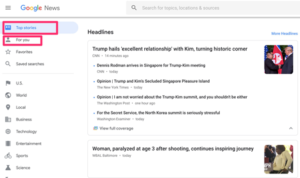 I think that learning to effectively engage in arguments is the most universally needed skill of our time. Yes, it is far more important than coding, biology, chemistry, art, etc. It is ignored because arguing has a bad reputation and is typically misunderstood. It is ignored because educators are unaware or see it as not relevant to what they teach. It is ignored because educators feel unable to lose control of the process when teaching the skills. Defining arguing as debating may help some. Debate is regarded as more refined although obscure. This is also a major part of the problem, meaningful arguing (taking a position, explaining your reasons for this position, and offering evidence for each reason) is not what so many understand arguing to be. Arguing is not shouting louder than the other guy. Arguing is intended to be combative as an effective way to explore issues and in many situations to seek the truth. Science is about arguing. It is the use of data and data collection to advance a position by correcting inaccurate positions that are completely wrong or need to be extended. Politics should be about arguing, but often is not.
I think that learning to effectively engage in arguments is the most universally needed skill of our time. Yes, it is far more important than coding, biology, chemistry, art, etc. It is ignored because arguing has a bad reputation and is typically misunderstood. It is ignored because educators are unaware or see it as not relevant to what they teach. It is ignored because educators feel unable to lose control of the process when teaching the skills. Defining arguing as debating may help some. Debate is regarded as more refined although obscure. This is also a major part of the problem, meaningful arguing (taking a position, explaining your reasons for this position, and offering evidence for each reason) is not what so many understand arguing to be. Arguing is not shouting louder than the other guy. Arguing is intended to be combative as an effective way to explore issues and in many situations to seek the truth. Science is about arguing. It is the use of data and data collection to advance a position by correcting inaccurate positions that are completely wrong or need to be extended. Politics should be about arguing, but often is not.
I write about arguing a lot and you can acquire some details by searching this site and considering what I say and following the links I provide.
This post has a slightly different purpose. It proposes that students can learn critical thinking and argumentation and can learn about important issues by observing those skilled in specific areas debate/argue about these areas. It may sound something like the bewildering activity of kids who watched skilled gamers play the games that interest them. It is similar to other uses of modeling in education.
As I have explored argumentation I have found tools and services that I see as offering ways to develop the skills of argumentation. I think observation with guidance can contribute. I think that the guidance, some might say scaffolding, is important. Have learners identify the reasons and evidence used by each side. Have learners identify if participants attempt to refute the reasons and evidence of the opposing side or simply continue to add their own reasons and evidence. Such scaffolding represents the types of tactics I think educators should be good at. The goal is to get students to think about the general strategy and eventually to try out the skills themselves.
I suggest educators might find the recorded debates provided by Intelligence2Debates to be very useful. Educators will likely benefit from the listening themselves (e.g., Can students learn from games?, Is social media good for democracy?), but should also see the potential for use with their students.
The summer is a great time for educators to consider new ideas for next year. Whatever your discipline, check out the list of topics available from the site I reference and consider how you might use some of these resources in your classroom.
![]()


You must be logged in to post a comment.